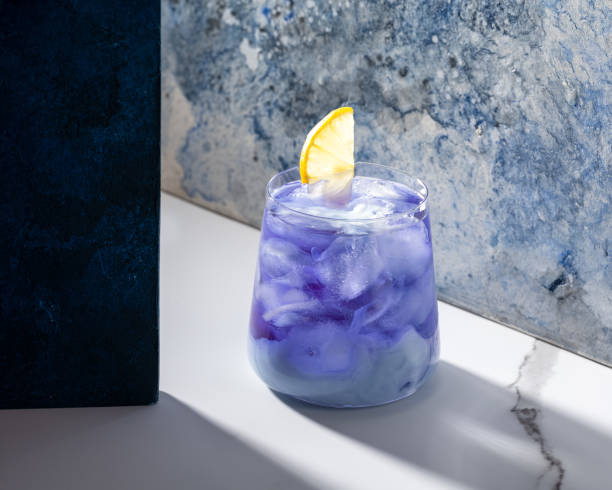I’m letting you in on a little secret: there’s a tea that not only captivates with its vivid azure hue but also offers many benefits for those who drink it. In this introduction, you’ll learn about blue tea, a beverage that might just be as beneficial for your body as it is beautiful in your cup.
Blue tea, also known by its exotic name ‘butterfly pea flower tea,’ originates from Southeast Asia. It is derived from the Clitoria Ternatea plant’s petals, also known as the butterfly pea. The petals boast a deep blue color, which infuses the water with its natural, eye-catching pigment when brewed.
Historically, this tea hasn’t just been a feast for the eyes; it’s played a significant role in Ayurvedic traditions and is revered for its supposed memory-enhancing and mood-regulating properties. It was, and still is, a botanical believed to harmonize the mind, body, and spirit.
That’s the strategy I like to leverage: looking back before moving forward. And that’s what we’re doing here. By understanding where blue tea comes from and what it represents, we set the stage for diving into the captivating world of its makeup and magic. So, let’s take a moment to sip slowly, as we explore the deeper shades of blue tea in the following section.
The Colorful Chemistry of Blue Tea: How It Gets Its Hue
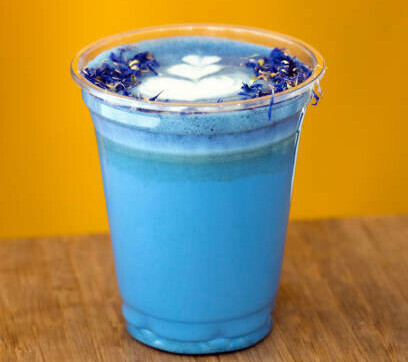
You’re probably curious how blue tea gets that signature sapphire tint, which makes it stand out in a sea of traditional tea colors. Well, it’s all thanks to the butterfly pea flower, scientifically known as Clitoria ternatea. This remarkable plant is native to tropical regions and is the powerhouse behind the vibrant color of blue tea.
At the heart of this blue marvel is the presence of anthocyanins, the same natural pigments found in blueberries, red cabbages, and purple grapes. Anthocyanins are fascinating; they not only bestow a gorgeous palette of colors upon plants but also come with various health benefits, which I’ll get to in a bit.
Anthocyanins have a fantastic party trick: they change color with the pH level of whatever they’re mixed with. This is why adding a squeeze of lemon to your blue tea turns it a beautiful purple. The acidity of the lemon alters the pH, resulting in a color change. Pretty wild, right? This isn’t just a neat kitchen experiment; it’s a testament to the dynamic nature of the compounds found in blue tea.
Nutritional Profile: What’s in a Cup of Blue Tea?
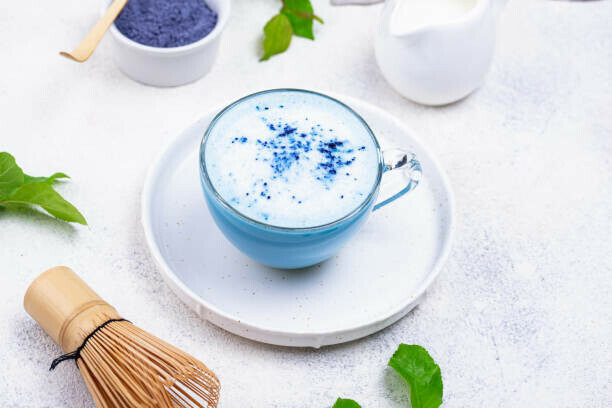
I will break down what a cup of blue tea packs regarding nutrition. Unlike the common tea varieties that most people are familiar with, blue tea stands out in color and its nutritional benefits. This caffeine-free herbal tea is a game-changer for those sensitive to caffeine or looking to reduce their intake without sacrificing a soothing tea experience.
Now, you’ll learn about the rich elements of this drink. Blue tea contains flavonoids and antioxidants that play a central role in promoting good health. These micronutrients are heroes in battling oxidative stress and combatting cell damage from free radicals. They’re a powerful ally for your body’s defense system.
There’s also a good measure of minerals and vitamins, including but not strictly limited to vitamin C, essential for immune health, and minerals like zinc, magnesium, and potassium. Each sip brings various nutrients, making blue tea an excellent addition to your daily diet.
I’m here to tell you that you’ll notice a lower tannin content if you’re comparing blue tea to green or black tea. Why does this matter? The bitter flavor in strong brewed teas comes from tannins, which can also block iron absorption. Therefore, blue tea can be a smart option for individuals who need to increase their iron levels.
To wrap this section up, choosing something that resonates with you from a nutritional standpoint is critical, and blue tea certainly presents a unique array of benefits. But what about these nutrients in action? Let’s steer toward the health benefits of blue tea and why they might make you want to reach for a cup right now.
Health Benefits: Sipping on Wellness with Blue Tea
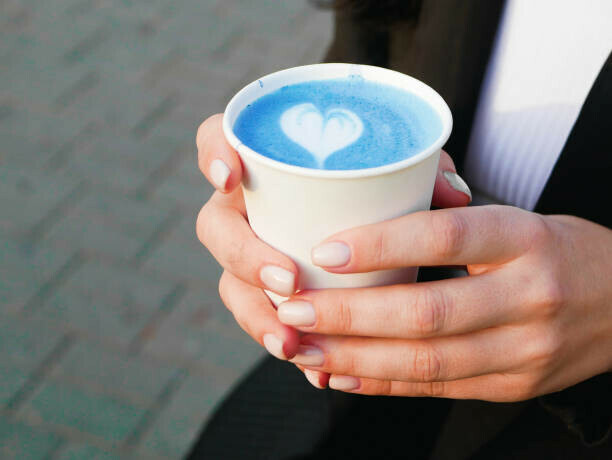
Imagine a tea that not only mesmerizes you with its electric blue hue but also packs a punch regarding health benefits. That’s blue tea for you. It’s not just a treat for the eyes but could also be one for your well-being.
One of the standout qualities of blue tea is its brain-boosting potential. Studies have suggested that it may help improve cognitive function and relieve stress. Your daily tea ritual could also become a moment of mental rejuvenation.
Antioxidants play a crucial role in our everyday food intake, and blue tea is packed with them, particularly catechins and flavonoids. These substances combat the harmful free radicals in your body, which may cause cellular harm and different long-term illnesses. Incorporating blue tea into your diet provides another tasty defense against oxidative stress.
Blue tea’s anti-inflammatory properties are another reason to celebrate this beverage. Chronic inflammation can be a silent threat contributing to numerous health conditions, but regularly sipping blue tea may help keep inflammation at bay. Plus, for those who have digestive woes, blue tea’s mild laxative effects can promote a happier gut.
If you’re already thinking of making blue tea a part of your life, hang tight. In the next section, I’ll delve into how blue tea could be your ally for beauty, offering more than skin profound benefits.
Beauty From Within: Blue Tea’s Skin and Hair Advantages
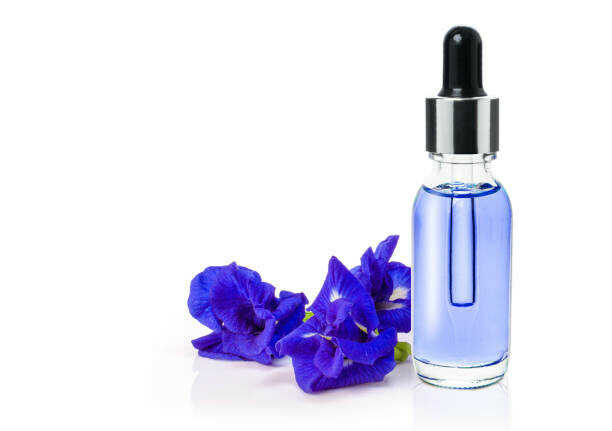
You’ll discover how blue tea is more than just a delightful beverage – it can also significantly benefit your beauty routine. Its abundant antioxidants make blue tea essential for promoting vibrant skin and luxurious hair.
Antioxidants are your skin’s best friend. They help battle free radicals, pesky molecules that cause aging and damage. With blue tea, a regular sip might mean fewer wrinkles and improved skin elasticity.
And don’t worry too much about those bad hair days. Blue tea has something for your hair, too. The anthocyanins that give blue tea its color can also strengthen hair follicles. This leads to healthier, stronger hair that can withstand daily wear and tear.
Choose something that resonates with you. If it’s natural beauty care, blue tea can be your companion. Regular consumption may improve overall hair appearance and shine, giving you added confidence in your look.
Just don’t focus too much on perfection. It’s about nurturing your body with what it needs. Now, let’s move on to something equally important – crafting the perfect blue tea experience for health and enjoyment.
Brewing the Perfect Cup: Tips and Variations for Blue Tea
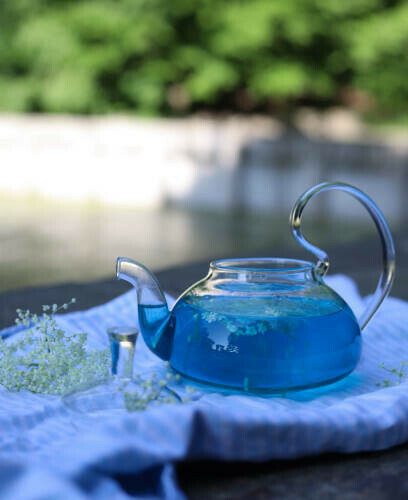
I’m here to help you master the art of brewing blue tea. It’s easier than you may realize, and after mastering it, you’ll discover numerous delightful ways to savor this lively beverage.
Now, what exactly do you need to get started? For a traditional hot brew, you only need hot water, a handful of butterfly pea flowers, or a teaspoon of dried blue tea leaves. Aim for water just off the boil, around 80-90 degrees Celsius, to avoid scorching the delicate leaves.
Steep for about 4 to 5 minutes. You’re looking for a deep, royal blue. To strengthen the flavor, add more leaves rather than increasing the steeping time. Over-brewing can lead to bitterness.
Blue tea excels as a cold brew if the weather calls for something more extraordinary. Mix the dry leaves with cold water and let them sit in the refrigerator overnight. By morning, you’ll have a refreshing and subtly flavored drink perfect for hot days.
Blue tea’s mild flavor pairs well with various herbs and spices. Add a slice of lemon or lime. Observe the shift in pH, causing the color to change from blue to purple. Incorporate ginger for a spicy kick or lemongrass for a citrusy note. And if you’re looking to sweeten things up, honey or agave are your go-to options.
Choose something that resonates with you; it’s your drink. And the best part? You have the flexibility to fine-tune your approach as you go along. Each variation offers a new dimension to blue tea, making it a versatile option for any tea enthusiast.
Concluding Thoughts: Embracing Blue Tea in Daily Life
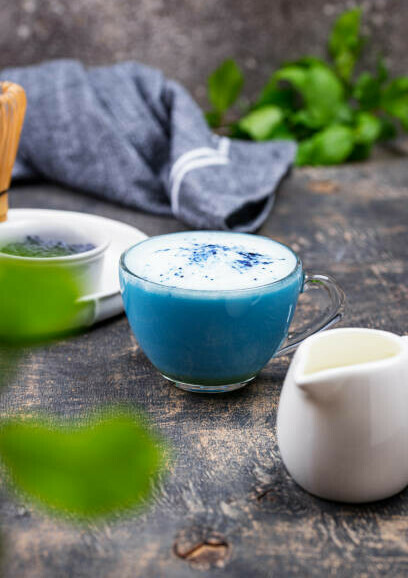
I’ve given you a peek into the vibrant world of blue tea, from its rich hue to its many health and beauty benefits. It’s not just a feast for the eyes; it’s nourishing your body and mind.
If you’re keen on adding a splash of color and a wave of benefits to your daily routine, blue tea might just be your cup of tea. I’ve been integrating it into my life and have noticed a pleasant shift in how I feel.
Start with one cup daily, see how your body and taste buds respond, and then adjust your intake. Remember that the optimal method matches your individual health objectives and way of life.
And don’t hesitate to get creative with it! Blue tea’s versatility lets you keep your palate entertained while reaping the rewards. Blue tea can adapt to your preferences, whether it’s a steaming mug to start your day or a chilled glass to unwind.
I really hope that you explore the wonders of blue tea for yourself. It’s a simple yet effective change that can positively affect your wellness regime. Thanks for coming along with me on this vibrant adventure. I’d love to hear how blue tea makes a difference for you!
Thank you for reading my article about “What Is Blue Tea Good For?”, and I would love to receive your comments down below, in case of any.

